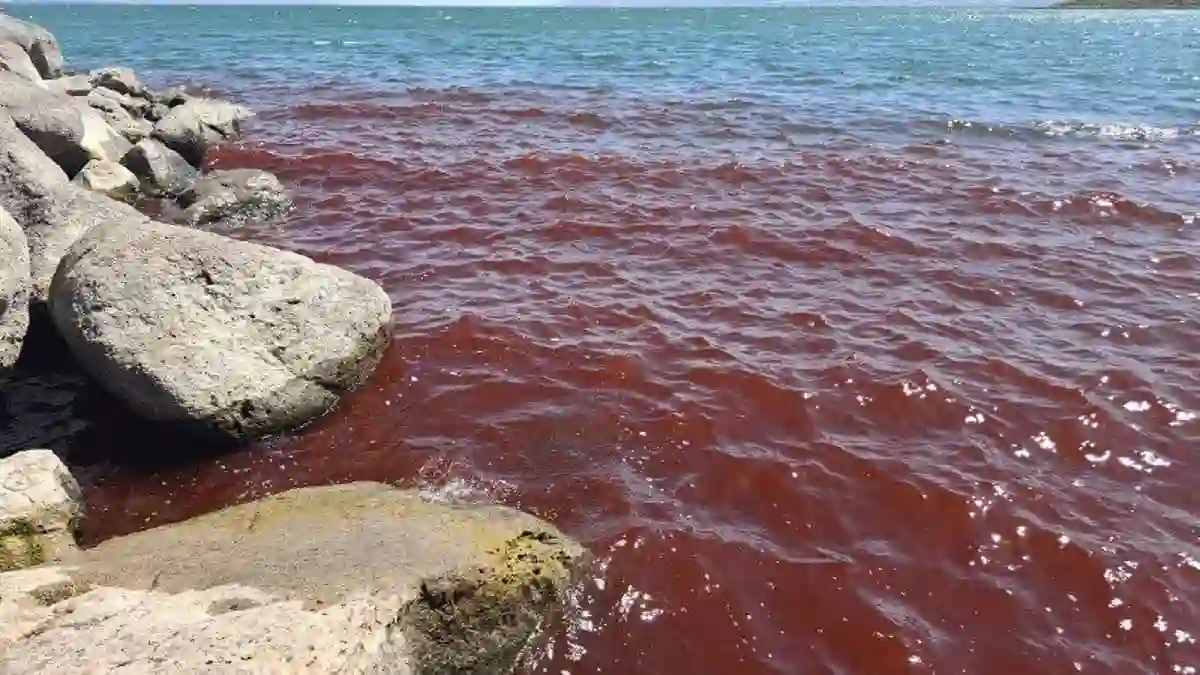Imagine showing up for a peaceful day by one of the most iconic lakes in the world, only to find the water looking like something straight out of a horror film.
That’s exactly what happened recently at the Sea of Galilee, where waves turned a shocking shade of blood-red—leaving tourists, locals, and online onlookers in total disbelief.
Fears of a Biblical Omen Sparked by the Strange Sight
As the crimson water lapped at the shore, murmurs quickly turned into outright alarm.
Many couldn’t help but draw comparisons to the dramatic plagues of ancient Egypt described in the Book of Exodus.
Social media erupted with users suggesting it was a modern-day version of the first biblical plague—when the Nile turned to blood after Moses struck it with his staff.
For some, it felt like a bad omen. Others took it as a sign of the so-called End Times, especially given the Sea of Galilee’s deep religious history.
Scientists Say It’s Natural, Not Supernatural
But while the public’s imagination went wild, scientists were quick to provide a grounded explanation.
According to Israel’s environmental ministry, the startling color is due to a bloom of microscopic algae, not divine punishment.
Specifically, they identified a green microalga known as Botryococcus braunii, which can cause a vivid red hue when it builds up natural pigments under strong sunlight.
No Danger in the Water Despite the Color
Officials confirmed that, despite the eerie appearance, the water remains completely safe to swim in.
Lab tests conducted by the Kinneret Research Laboratory revealed no toxins, allergic reactions, or health hazards linked to the red algae.
It’s more of a visual surprise than an environmental threat.
The Algae Has an Unexpected Connection to Biofuel
Interestingly, the algae responsible isn’t just known for turning water red.
Botryococcus braunii is also studied for its ability to produce hydrocarbons—compounds similar to crude oil—which has drawn attention for potential use in biofuel development.
The conditions that caused this bloom—high temperatures, sunny skies, and nutrient-rich water—are typical triggers for algae growth, especially during the summer months.
Religious and Historical Significance Makes the Event More Striking
What makes this incident even more emotionally charged is the spiritual significance of the Sea of Galilee.
In Christian tradition, this is the very lake where Jesus walked on water, fed thousands with loaves and fish, and called his first disciples.
So, seeing it suddenly transform into a sea of red naturally stirred strong reactions among believers.
Not the First Time Waters Have Turned Red in the Holy Land
This isn’t the only time blood-red water has caused a stir in the region.
Back in 2021, a pond near the Dead Sea, in what’s now modern-day Jordan, also mysteriously turned red.
That area is traditionally linked to the ancient cities of Sodom and Gomorrah—biblical sites associated with divine judgment.
Once again, the event set social media alight, with theories ranging from environmental causes to apocalyptic predictions.
But just like the recent Galilee incident, scientists pointed to natural explanations such as algae blooms or mineral reactions.
A Nod to the Ten Plagues—and the Power of Symbolism
Many people still connect such transformations to the dramatic events in Exodus.
The Bible recounts that God sent ten devastating plagues to pressure Egypt’s Pharaoh into freeing the Israelites from slavery—starting with the water of the Nile turning to blood.
Other plagues included frogs, gnats, locusts, boils, and even the death of firstborn sons.
These ancient references add a symbolic weight to modern phenomena—especially when they happen in places so steeped in religious lore.
Nature’s Wonders or Warnings?
Whether you see the red Sea of Galilee as a warning, a wonder of nature, or just a curious scientific event, one thing’s for sure—it grabbed the world’s attention.
Between its spiritual symbolism and biological explanation, the transformation is a vivid reminder of how natural phenomena can still stir something deep in the human imagination.
